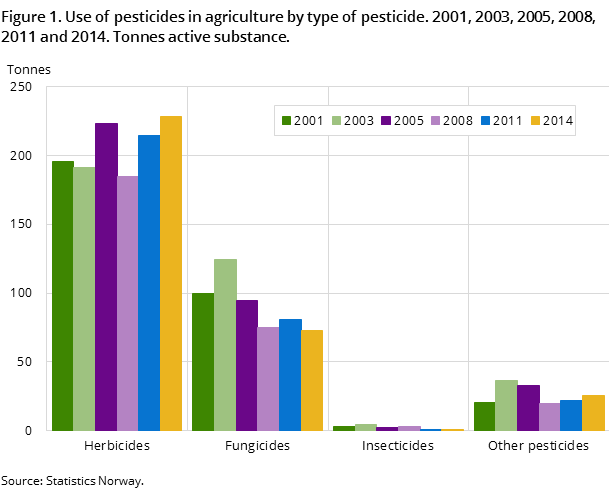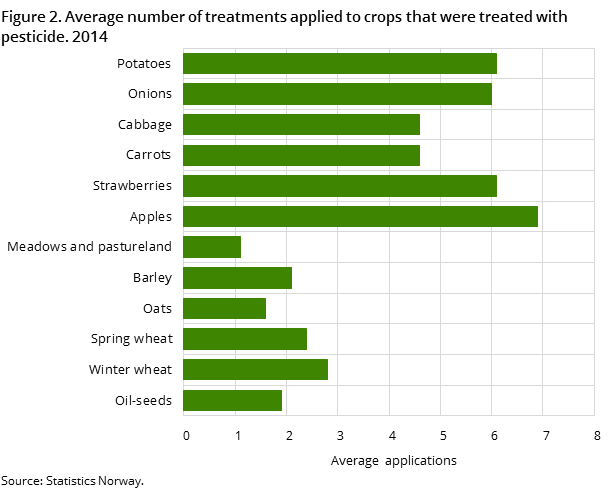One third of agricultural area sprayed
Published:
In 2014, only one third of the total agricultural area in use was sprayed with pesticides. This is related to the fact that only 6 per cent of the area of meadows and pastureland was sprayed. For other crops, 94 per cent of the area was treated at least once during the growing season.
- Full set of figures
- Pesticide use
- Series archive
- Pesticide use (archive)
In 2014, Statistics Norway conducted the sixth survey on the use of pesticides in agriculture since 2000. Measured by amount of active substance, the use of pesticides showed an increase of 3 per cent compared with the previous survey in 2011. Herbicides accounted for 70 per cent of the total weight of 328 tonnes of active substances of pesticide applied, fungicides 22 per cent, growth regulators 8 per cent and insecticides less than half a per cent.
Large proportion of arable crops sprayed
Thirty-four per cent of the conventional agricultural area in use was treated with pesticides in 2014. Only 6 per cent of 630 thousand hectares of meadows and pastureland was treated. For the remaining 290 thousand hectares of other crops, the percentage of area treated with pesticides varied from 79 per cent for oil-seeds to almost 100 per cent for onions.
More herbicides
From 2011 to 2014, the total quantity of herbicides increased by 6 per cent, mainly due to an increase in the use of glyphosate agents, which are commonly used in the treatment of troublesome rootstock weeds, such as couch grass. The total quantity of fungicides and insecticides decreased by 10 per cent and 5 per cent respectively.
Decreasing number of treatments
The pressure from pests (weeds, fungi and insects) differs between crops. Weather conditions will also significantly affect the use of pesticides. The number of yearly treatments in most of the crops investigated decreased or were unchanged from 2011 to 2014. The average number of treatments varied between 1.1 times in meadows and pastureland to 6.9 times in apples.
Contact
-
Berit Bjørlo
-
Per Amund Aarstad
-
Statistics Norway's Information Centre


